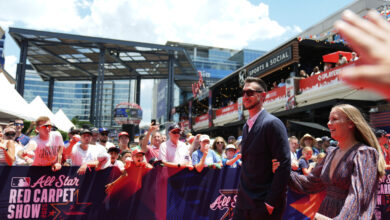
An In-Depth Look at Jose Quintana’s Pitch Portfolio
Jeff Sullivan of FanGraphs wrote a column comparing Jose Quintana to Jon Lester, titled “Cubs Accurately Rate Underrated Jose Quintana.” The two successful pitchers’ surface numbers essentially are mirror images, as Sullivan astutely pointed out.
| SP | Starts | IP/Start | WAR | K% | BB% | Strike% | HR/FB% |
| Quintana | 96 | 6.3 | 13.9 | 22% | 6% | 64% | 9% |
| Lester | 97 | 6.3 | 13.4 | 25% | 6% | 64% | 11% |
But the way Quintana gets batters out is much different from how Lester does it, and Quintana will bring a unique set of strengths to the Cubs that will be on display for the next three-and-a-half baseball seasons.
This post will look at how Quintana has been successful.
Pitch Usage
The new Cubs pitcher is predominantly a four-seam, sinker, and curve kind of starter. He’ll throw a changeup around eight times a game, but there’s no doubt the curve is his go-to-pitch. As a comparison, Lester throws curves and sinkers at half the rate.
Jose Quintana
| Year | Fourseam | Sinker | Cutter | Curve | Change |
|---|---|---|---|---|---|
| 2015 | 37.92 | 16.85 | 4.50 | 30.86 | 9.72 |
| 2016 | 41.14 | 25.21 | 0.49 | 24.83 | 8.33 |
| 2017 | 42.24 | 20.05 | 0.00 | 29.45 | 8.25 |
Jon Lester
| Year | Fourseam | Sinker | Cutter | Curve | Change |
|---|---|---|---|---|---|
| 2015 | 42.67 | 10.53 | 26.24 | 15.41 | 5.12 |
| 2016 | 46.92 | 12.12 | 23.50 | 12.20 | 5.23 |
| 2017 | 40.56 | 10.87 | 26.41 | 13.41 | 8.75 |
Pitch Location and Release Point
Quintana loves to throw four-seamers up and in to righties, then finish batters with a curve that dives down and in. Batters have faced the combination 389 times already this season, his most used duo by far, so expect to see it as a staple.
And get this, the lefty’s curve/four-seam combo has the best release:tunnel ratio in MLB this year, meaning no other pitcher is more consistent in their release point using the two pitches, not even Jon Lester.
Swinging Strike Rates
Remember how Quintana throws a curve three times out of every 10 pitches? There’s a reason why. His swinging-strike rate on it is better than 75 percent of curves thrown. Last year, it was roughly at league average, but the previous year it was around 71 percent. In total, Quintana’s curve ranks as well above the league average in the whiff department.
Like his curve, both his sinker and four-seam have ranked in the top tier of MLB pitches over the previous two-and-a-half seasons. His four-seam stands strong at a ~75 percent swinging strike rate, and it hasn’t deviated much from year to year.
His change, on the other hand, has only generated whiffs better than approximately 10 percent of pitches over the last three seasons. Maybe the change sets up his hard stuff.
| Rank (e.g., 70% means better than 70% of MLB pitches) | ||||
| Year | Fourseam | Sinker | Change | Curve |
| 2015 | 85.86% | 95.13% | 9.53% | 70.48% |
| 2016 | 74.72% | 72.88% | 7.74% | 49.77% |
| 2017 | 74.72% | 52.93% | 11.57% | 75% |
Conclusion
Quintana is going to bury batters using deception. While he won’t generate above-average whiffs, he’ll still make batters swing and miss enough, especially using his four-seamer and curve. It is this pitch combination that has made his career. Displaying the best release point variability for a curve/fourseam pitcher, he’s been able to consistently induce weakly hit fly balls, which has led to low ERA’s and matched scFIP’s.


